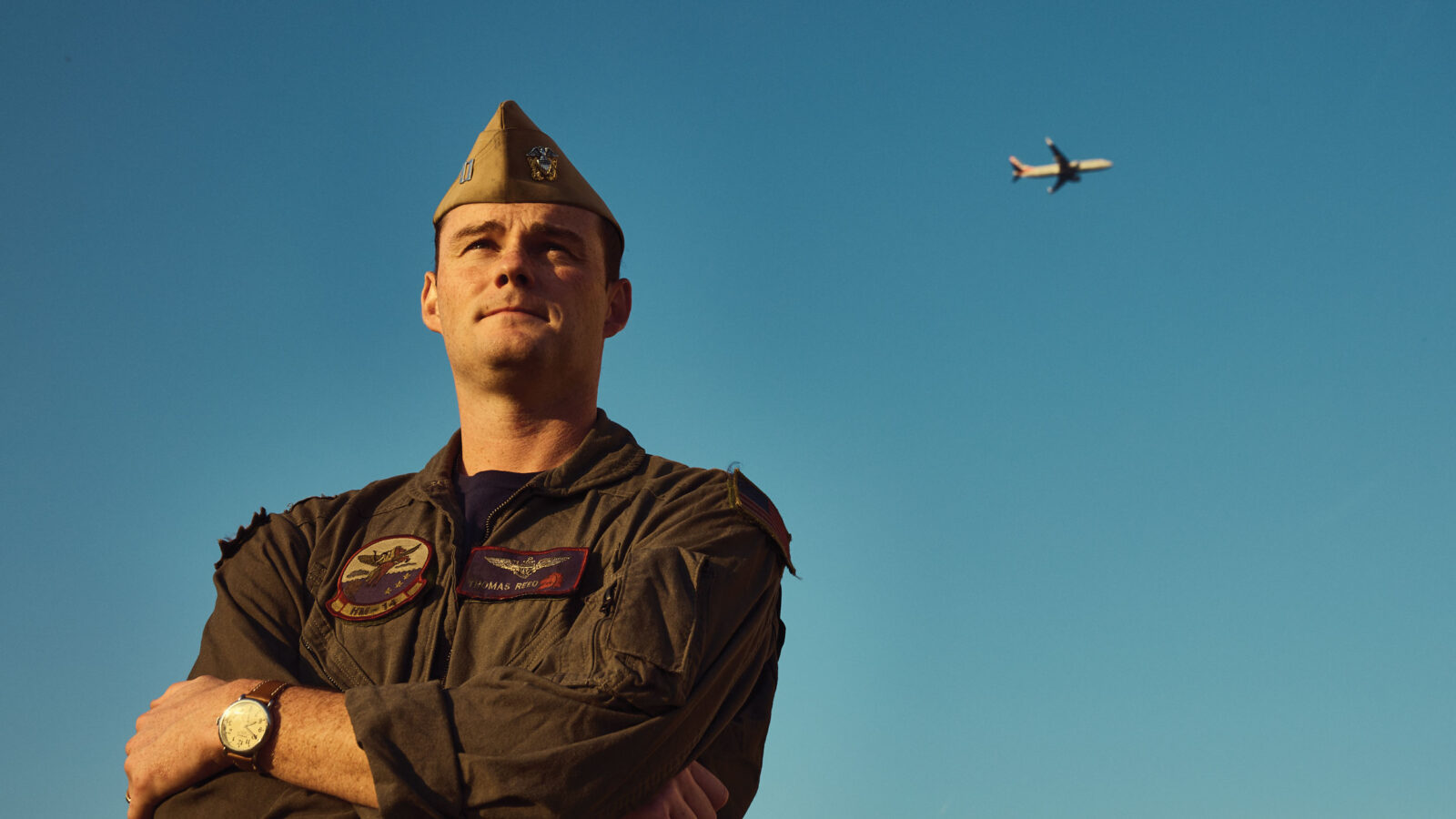A sense of service and a pocket Constitution—two things Navy pilot and White House military officer Tommy Reed ’10 carries with him from Williston
In the top compartment of a nondescript backpack sits Tommy Reed’s pocket Constitution—a prized memento from a history class with former History and Global Studies teacher Peter Gunn. “I took that with me on every deployment, always in my flight bag,” recalls Reed, a U.S. Navy helicopter pilot who most recently served as Coordinator of Military Transportation for the White House. “Every time we recite our oath to the Constitution, I think about the fact that I got it in that class.”
This past October, Reed wrapped up his service on the team that helps coordinate flights by Air Force One, the presidential jet, and Marine One, the helicopter often seen transporting the president from the White House lawn. The role capped a 10-year career in the Navy that had a profound impact on Reed’s life, and reinforced the values of service and teamwork that he says he developed at Williston. With his wife expecting their first child in February 2024, Reed is now looking ahead to his next chapter as a civilian—possibly working himself at an independent school—and looking back at his Navy accomplishments with a new perspective.
Prior to his work for the executive branch, Reed was one of a small number of Navy pilots who fly the MH-53E, known as the Big Iron, the military’s largest and most powerful helicopter. With a load capacity of 32,000 pounds, the Big Iron specializes in heavy lift operations, hauling cargo and up to several dozen people. “I have a complex relationship with that aircraft,” says Reed, who spent countless hours operating what he describes as a muscle car version of a helicopter. “When I was in helicopter training during flight school, I thought the ’53’ was awesome. I loved the idea of flying with a big crew in that big, old, greasy helicopter.”
The Navy uses the MH-53E, along with other assets, to find, detect, and eliminate sea mines. Built in the 1980s (and still using technology from that era), the MH-53E takes a massive amount of manpower to operate safely. Of the roughly 500 members of Reed’s squadron, fewer than 25 percent (the 30 pilots and some 60 crew members) actually fly in the aircraft. The remaining 75 percent work on the ground to ensure the helicopter is safe to operate. “It’s an absolute team effort,” notes Reed, “and that’s one of the biggest things I’m proud of: I was part of that team, and we went out there and operated safely. We did what we could with an old helicopter that was built before I was born.”
The idea of serving a goal greater than oneself is deeply woven into Reed’s life history. It dates back to his four grandparents, all of whom are buried at Calverton National Cemetery, Long Island’s cemetery for military veterans and their families. Growing up Irish Catholic on Long Island, he frequently attended Sunday Mass, a tradition that continued at Williston, often alongside Athletic Director Mark Conroy and his family.
“It started at Williston,” says Reed, explaining how his experience playing hockey for Coach Derek Cunha instilled values of service and teamwork that were foundational to his growth at the Naval Academy. An example: One week into the hockey season, as a repeat sophomore and the youngest player on a Williston hockey team led by postgraduates, Reed was not getting much playing time. Taking his mother’s advice, he approached Cunha to let him know that he understood his role on the team, and that he was dedicated to earning his spot. “I was this awkward teenage kid,” says Reed, recalling the conversation with Cunha. “I told him, ‘I’m going to try hard; I know I’m not playing, and I understand because I’m young that I have to earn it.’ And Coach was like, ‘Yep, there you go.’”
Shortly after that conversation, Reed says, he had an experience that gave him his first sense of belonging to the Williston family. “We played a home game, and every time I got an opportunity, I shot the puck. I scored two goals that game. I remember the next day at school, teachers, students, and upperclassmen were all saying, ‘Way to go, Tommy!’ And instantly, I was like, ‘I love it here!’”
As a member of the Head’s Visiting Council and a Williston Northampton Fund co-chair, Reed has returned to Williston and found some of his favorite things unchanged: So many of his favorite faculty members are still here, a testament to the strength of the Williston community.
When Reed hangs up his flight bag and returns to civilian life next October, he’ll take with him his pocket Constitution and a sense of purpose and duty that Williston and the Navy have reinforced. “It’s all about the team, building you to be part of something bigger than yourself. Know your role, but also train someone else to take over your job and make it better than when you got there.”

